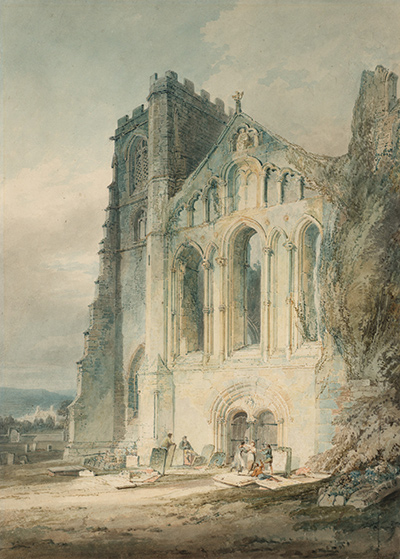Turner was considered a master of fine art at a very early stage due to the quality of his paintings, but it took many years to truly understand his abilities as a draughtsman, as more and more discoveries from his career were made.
Turner's skills as a draughtsman were best uncovered by the discovery of his many sketchbooks. There were hundreds of preparatory works found boxed up in his studio and most were later bequeathed to the state. Drawings and watercolours filled the majority of these and this section introduces the key drawing-based sketchbooks.
The artist went to considerable length when preparing his work. Not all of his sketchbooks were purchased "off the shelf" for example. He would get some custom bound to precisely his own requirements. He continued this level of precision into every medium in which he was involved. Beyond these collections, there were also many drawings discovered after his death that were loosely stored. Some may have originally been part of a bound book and then later separated.
Pencil sketches would dominate more than half of the sketchbooks. He also used chalk and ink on other occasions, as well as watercolours, of which there were many. His level of detail used would vary greatly from one sketchbook to the next, even from one page to the next. There be rough outlines to help remind him of items at a later date all the way through to complex drawings that could be considered as completed artworks in their own right.
The books when studied as a collective offer an insight into how the artist’s methods changed over time. He was both ambitious and also curious, never willing to settle on what had gone before. Another interesting element displayed by these study pieces is that he would different approaches at the same time. He may handle a single object, such as a particular landscape scene, and produce multiple variants of it across different mediums or styles.
Whilst making use of different size books, Turner tended to prefer smaller ones for his pencil sketches. Years of practice had taught the artist how to make his necessary shapes and outlines at an impressive speed, as if writing in shorthand. He could then re-use these at a later date for a larger artwork or instead add greater detail and develop it into something more considerable. Context was also key to how he completed drawings, where if he was travelling to somewhere new he may wish to concentrate on the shapes of new trees that he had not come across before, or perhaps remember a particular landscape scene more clearly.




